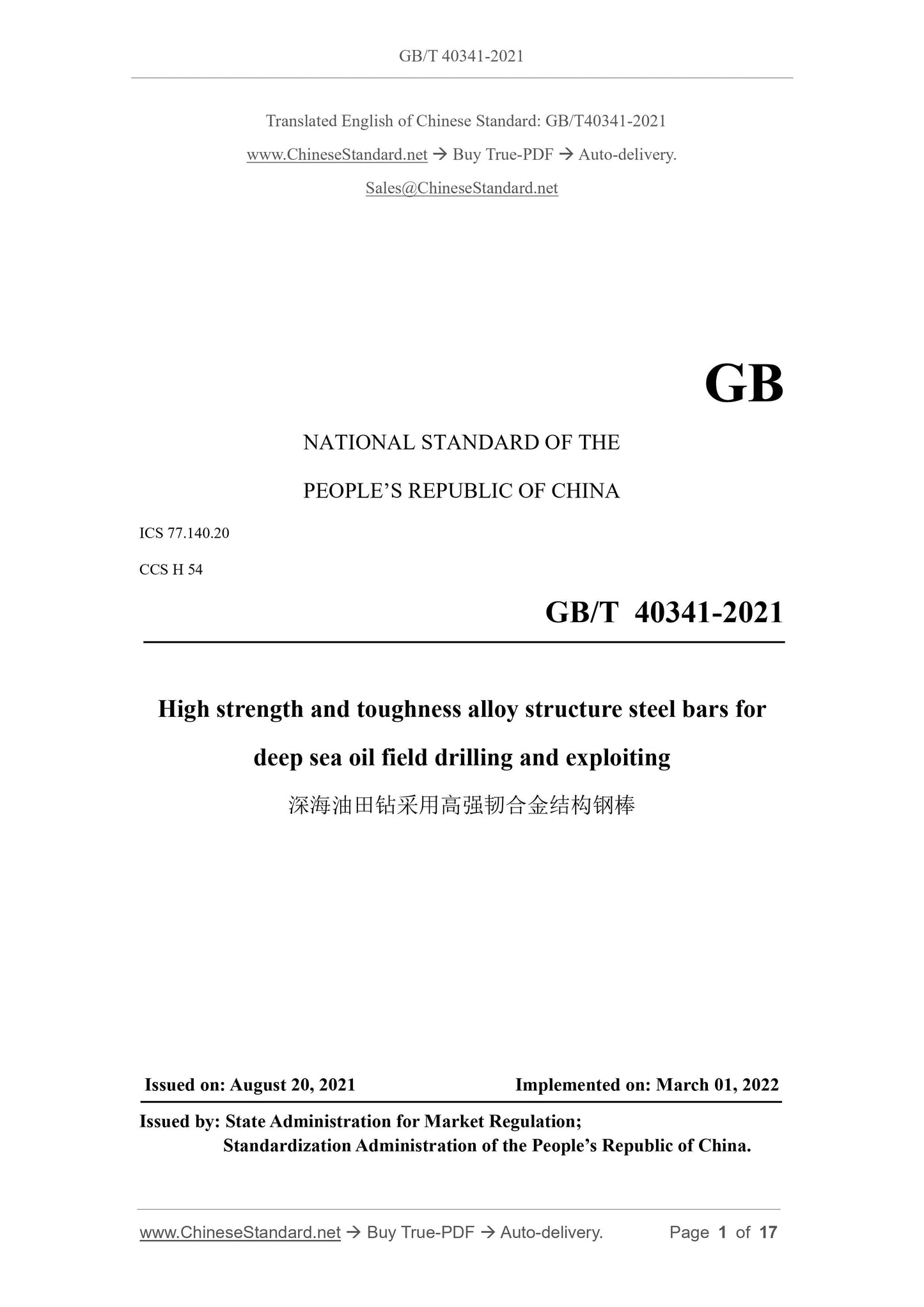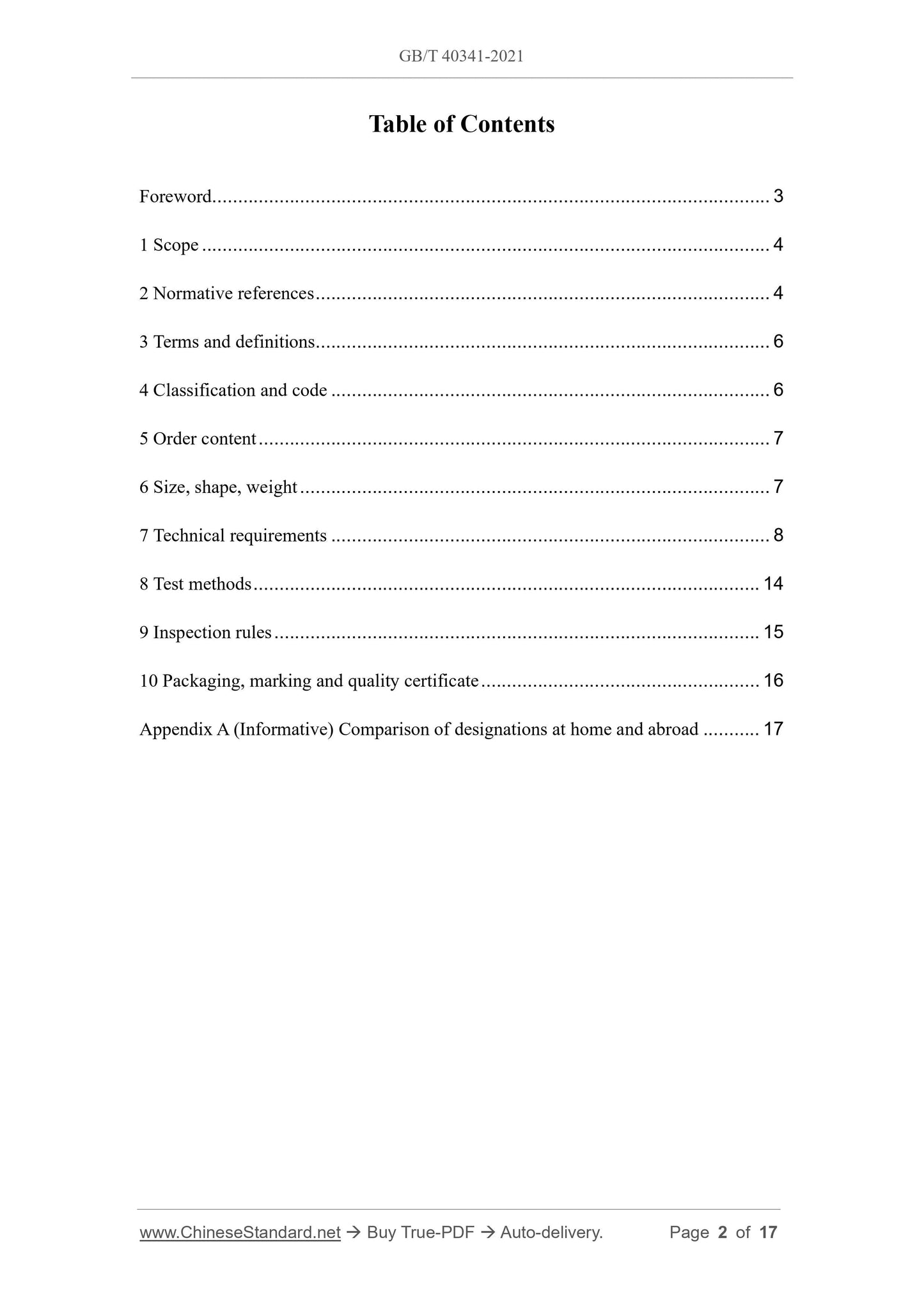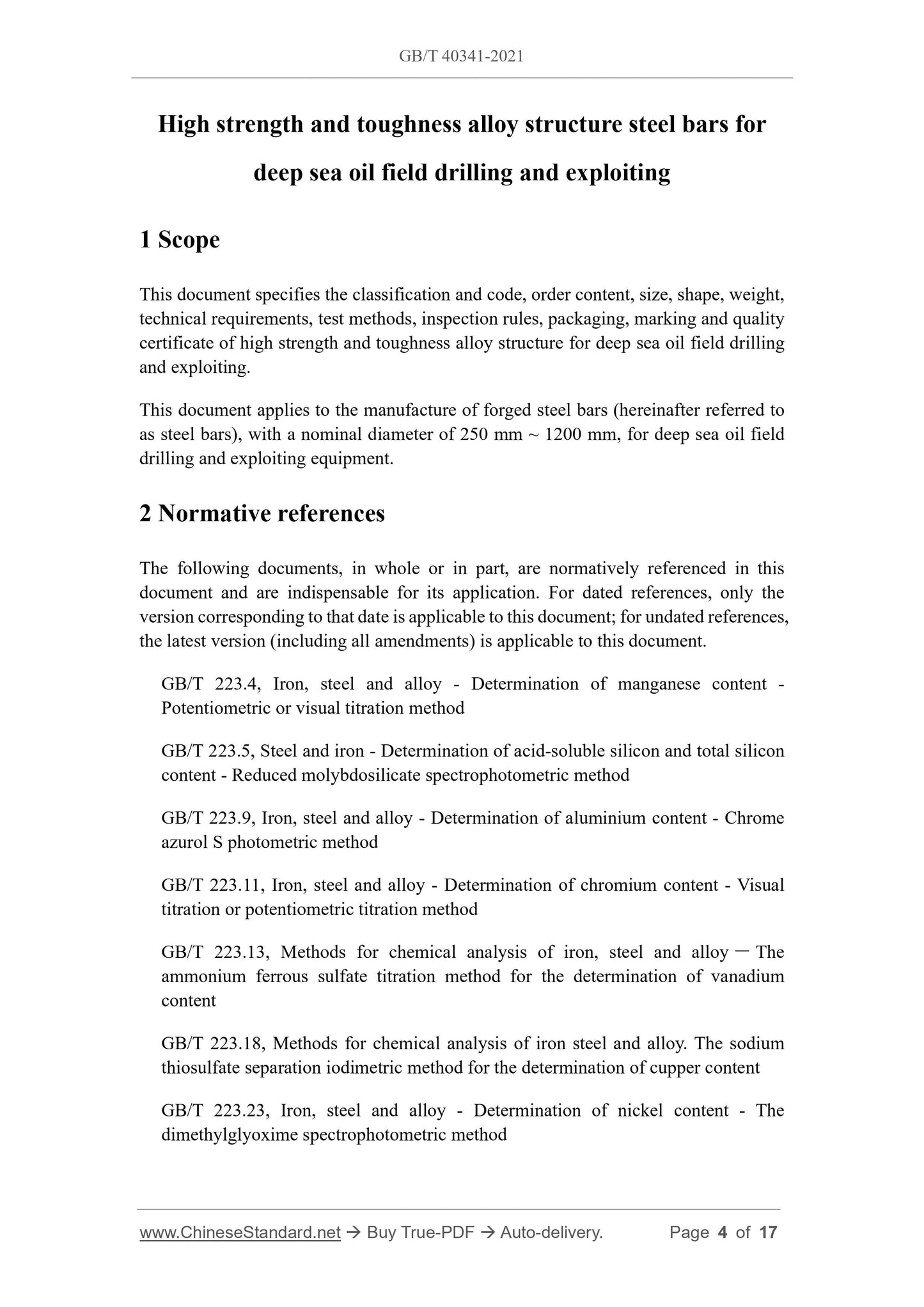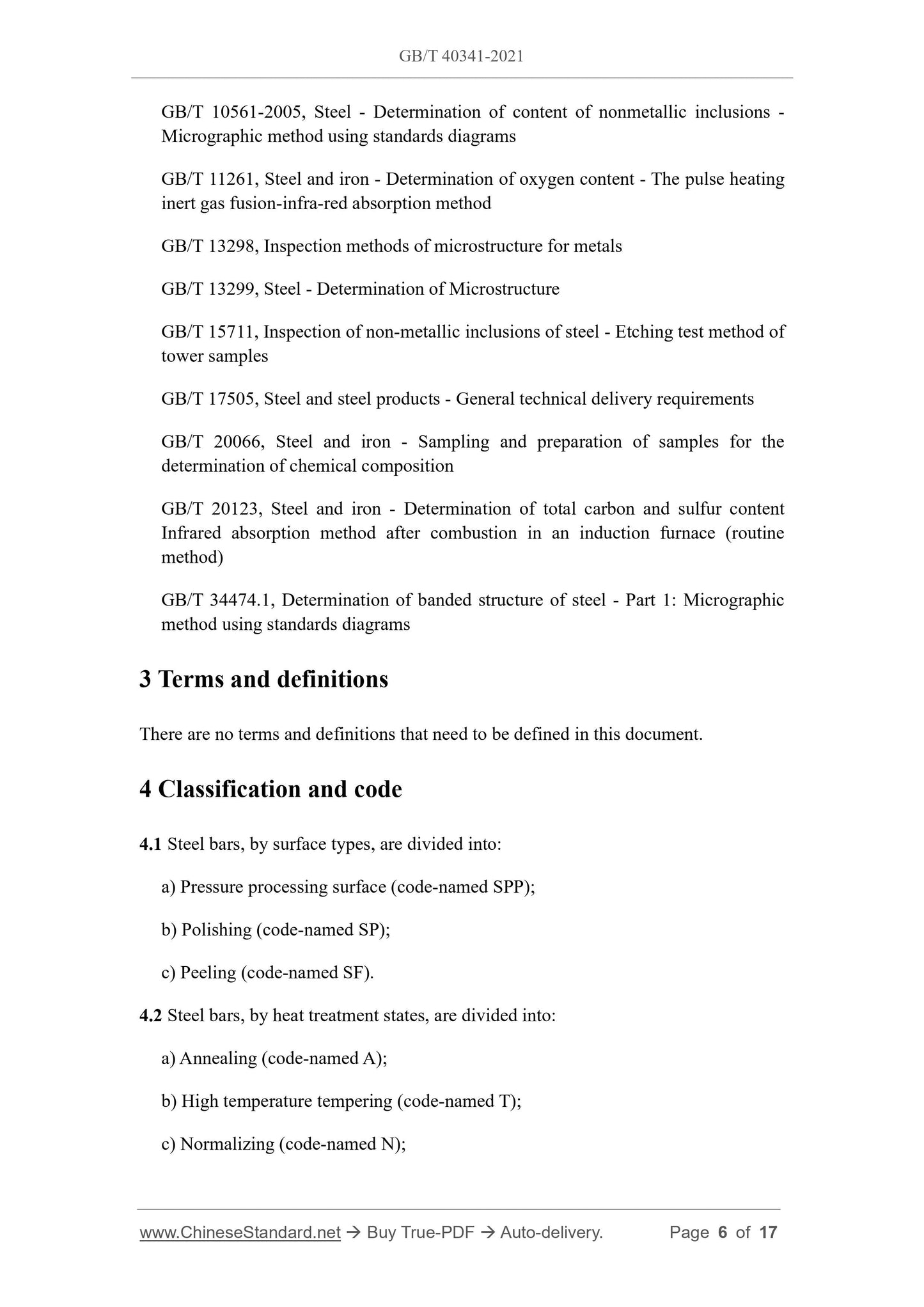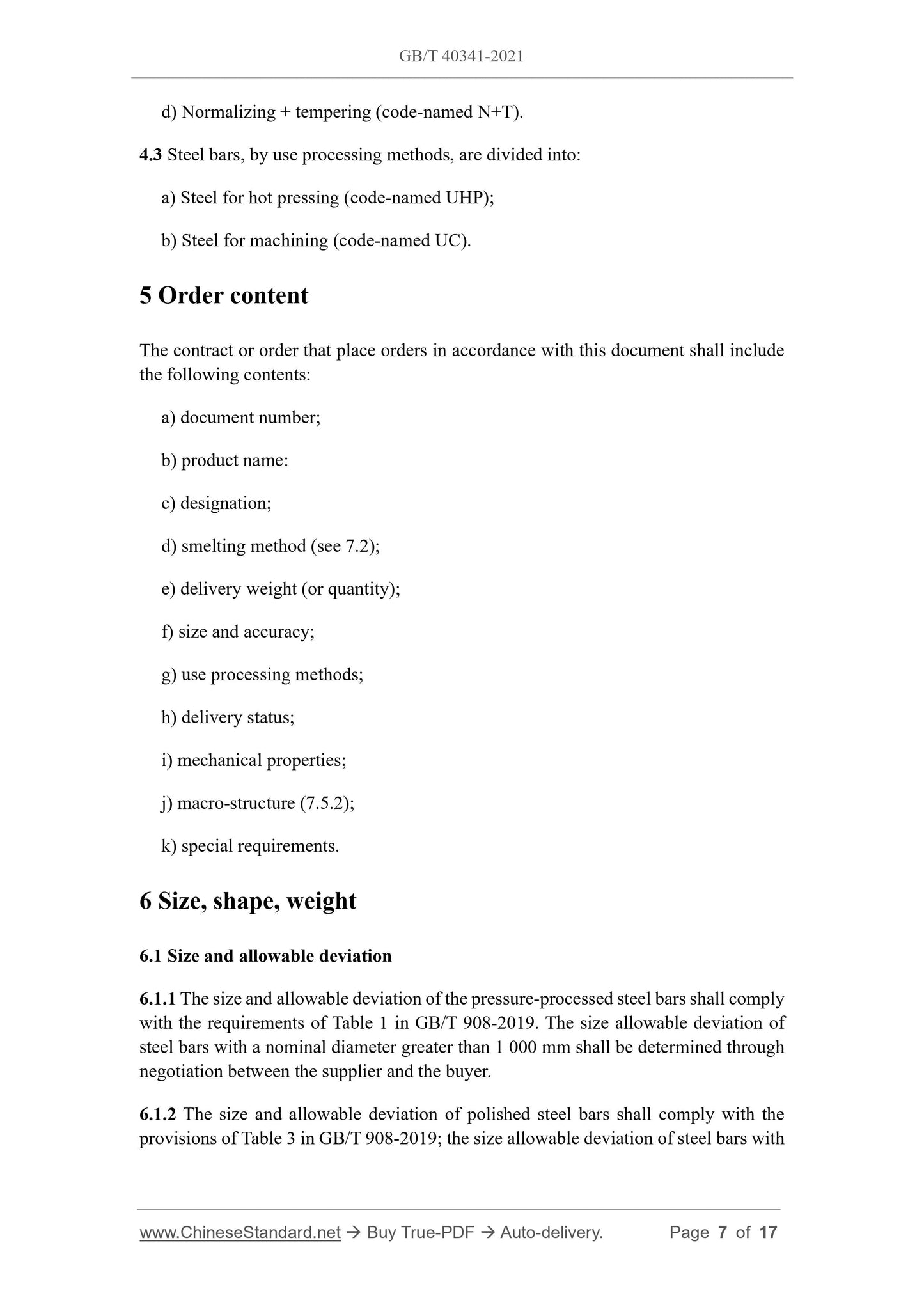1
/
of
5
www.ChineseStandard.us -- Field Test Asia Pte. Ltd.
GB/T 40341-2021 English PDF (GB/T40341-2021)
GB/T 40341-2021 English PDF (GB/T40341-2021)
Regular price
$230.00
Regular price
Sale price
$230.00
Unit price
/
per
Shipping calculated at checkout.
Couldn't load pickup availability
GB/T 40341-2021: High strength and toughness alloy structure steel bars for deep sea oil field drilling and exploiting
Delivery: 9 seconds. Download (and Email) true-PDF + Invoice.Get Quotation: Click GB/T 40341-2021 (Self-service in 1-minute)
Newer / historical versions: GB/T 40341-2021
Preview True-PDF
Scope
This document specifies the classification and code, order content, size, shape, weight,technical requirements, test methods, inspection rules, packaging, marking and quality
certificate of high strength and toughness alloy structure for deep sea oil field drilling
and exploiting.
This document applies to the manufacture of forged steel bars (hereinafter referred to
as steel bars), with a nominal diameter of 250 mm ~ 1200 mm, for deep sea oil field
drilling and exploiting equipment.
Basic Data
| Standard ID | GB/T 40341-2021 (GB/T40341-2021) |
| Description (Translated English) | High strength and toughness alloy structure steel bars for deep sea oil field drilling and exploiting |
| Sector / Industry | National Standard (Recommended) |
| Classification of Chinese Standard | H54 |
| Word Count Estimation | 14,128 |
| Issuing agency(ies) | State Administration for Market Regulation, China National Standardization Administration |
Share
